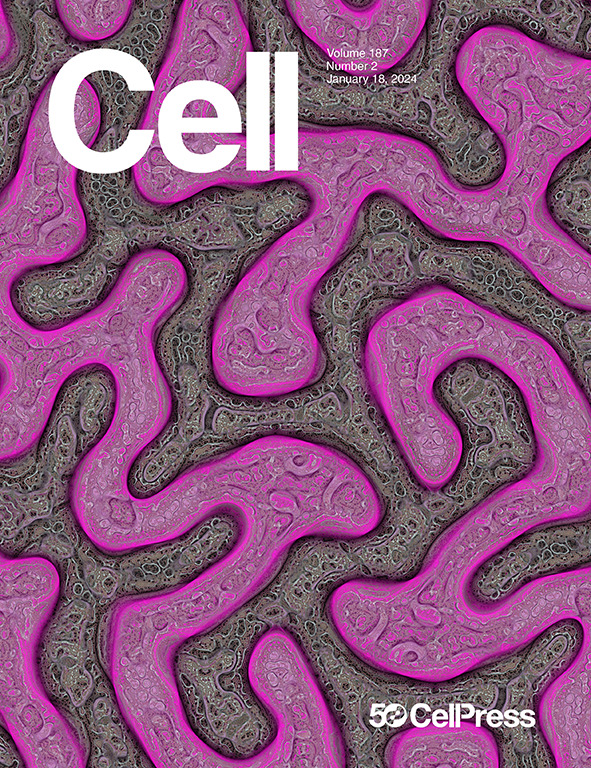Mapping the landscape of social behavior
IF 45.5
1区 生物学
Q1 BIOCHEMISTRY & MOLECULAR BIOLOGY
引用次数: 0
Abstract
Social interaction is integral to animal behavior. However, lacking tools to describe it in quantitative and rigorous ways has limited our understanding of its structure, underlying principles, and the neuropsychiatric disorders, like autism, that perturb it. Here, we present a technique for high-resolution 3D tracking of postural dynamics and social touch in freely interacting animals, solving the challenging subject occlusion and part-assignment problems using 3D geometric reasoning, graph neural networks, and semi-supervised learning. We collected over 110 million 3D pose samples in interacting rats and mice, including seven monogenic autism rat lines. Using a multi-scale embedding approach, we identified a rich landscape of stereotyped actions, interactions, synchrony, and body contacts. This high-resolution phenotyping revealed a spectrum of changes in autism models and in response to amphetamine not resolved by conventional measurements. Our framework and large library of interactions will facilitate studies of social behaviors and their neurobiological underpinnings.

描绘社会行为的图景
社会互动是动物行为不可或缺的一部分。然而,由于缺乏以定量和严格的方式描述它的工具,我们对它的结构、基本原理和神经精神疾病(如自闭症)的理解受到了限制。在这里,我们提出了一种高分辨率的3D跟踪技术,用于自由互动动物的姿势动态和社会接触,利用3D几何推理、图神经网络和半监督学习解决具有挑战性的受试者遮挡和部分分配问题。我们在相互作用的大鼠和小鼠中收集了超过1.1亿个3D姿势样本,其中包括7个单基因自闭症大鼠系。使用多尺度嵌入方法,我们确定了刻板动作、交互、同步和身体接触的丰富景观。这种高分辨率的表型分析揭示了自闭症模型和对安非他明的反应的一系列变化,这是传统测量方法无法解决的。我们的框架和大型互动库将促进社会行为及其神经生物学基础的研究。
本文章由计算机程序翻译,如有差异,请以英文原文为准。
求助全文
约1分钟内获得全文
求助全文
来源期刊

Cell
生物-生化与分子生物学
CiteScore
110.00
自引率
0.80%
发文量
396
审稿时长
2 months
期刊介绍:
Cells is an international, peer-reviewed, open access journal that focuses on cell biology, molecular biology, and biophysics. It is affiliated with several societies, including the Spanish Society for Biochemistry and Molecular Biology (SEBBM), Nordic Autophagy Society (NAS), Spanish Society of Hematology and Hemotherapy (SEHH), and Society for Regenerative Medicine (Russian Federation) (RPO).
The journal publishes research findings of significant importance in various areas of experimental biology, such as cell biology, molecular biology, neuroscience, immunology, virology, microbiology, cancer, human genetics, systems biology, signaling, and disease mechanisms and therapeutics. The primary criterion for considering papers is whether the results contribute to significant conceptual advances or raise thought-provoking questions and hypotheses related to interesting and important biological inquiries.
In addition to primary research articles presented in four formats, Cells also features review and opinion articles in its "leading edge" section, discussing recent research advancements and topics of interest to its wide readership.
 求助内容:
求助内容: 应助结果提醒方式:
应助结果提醒方式:


